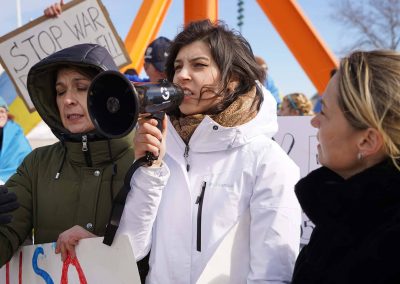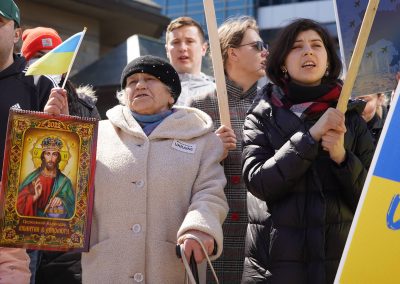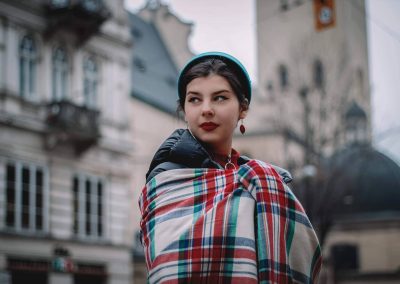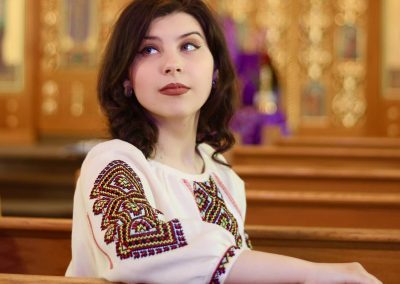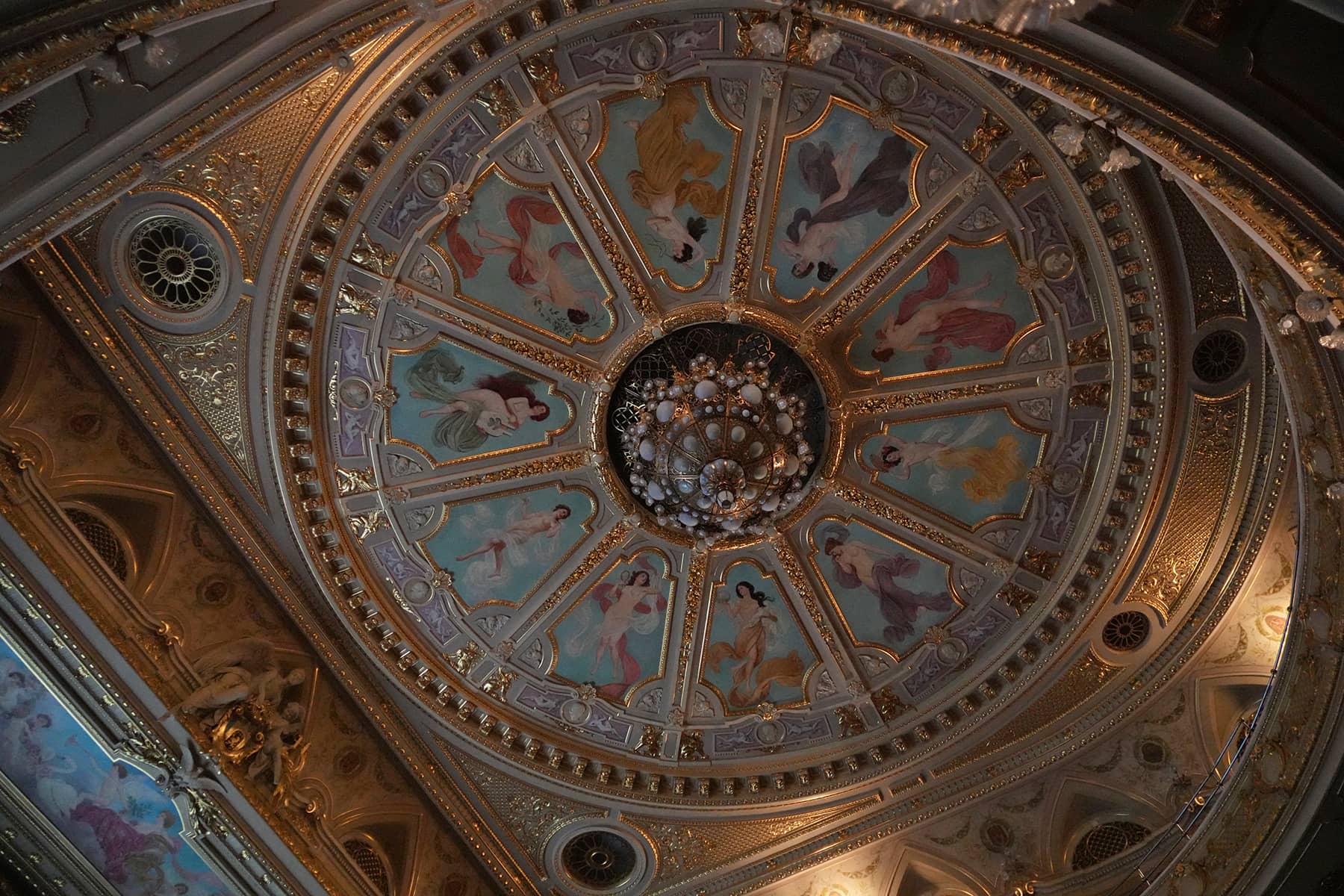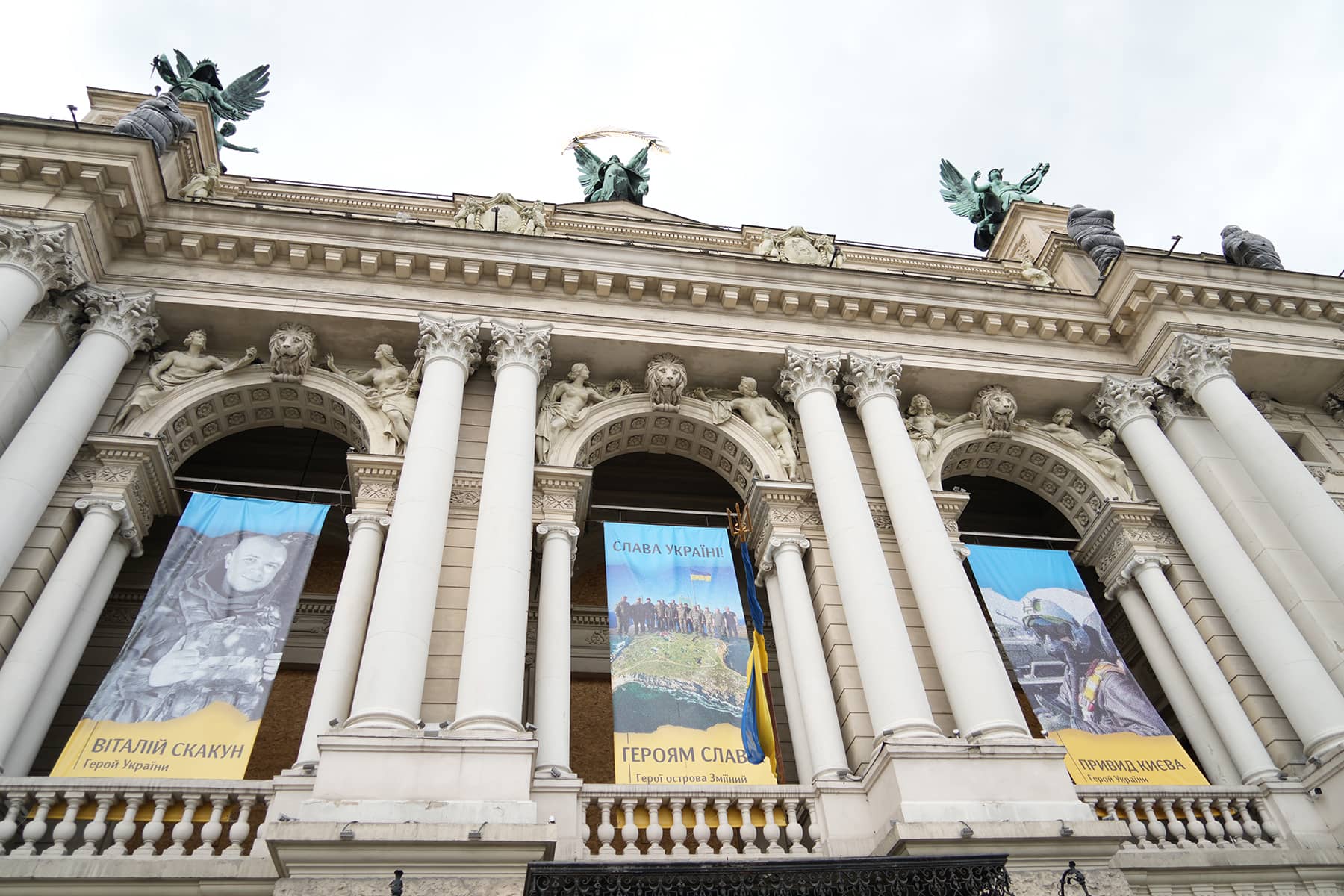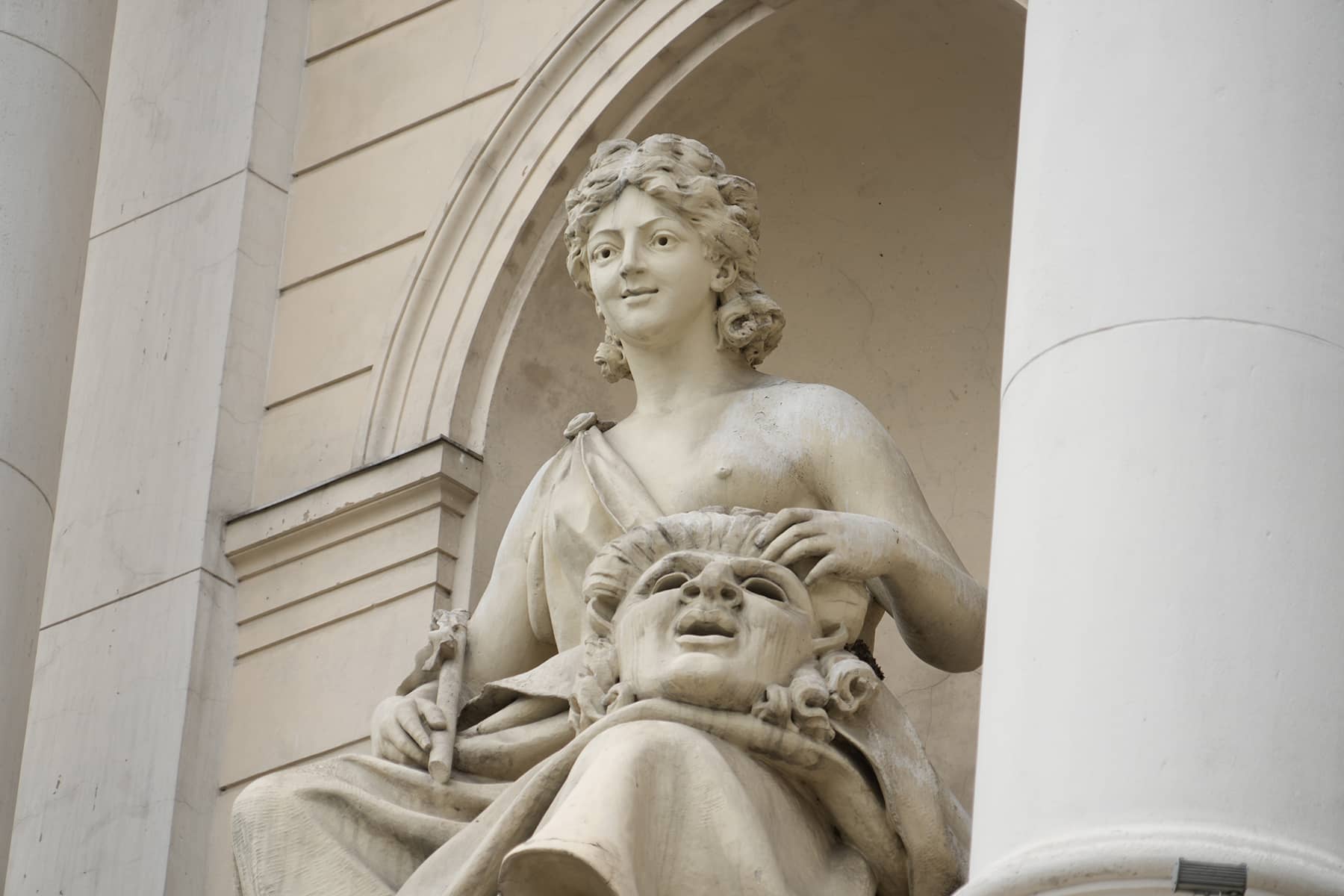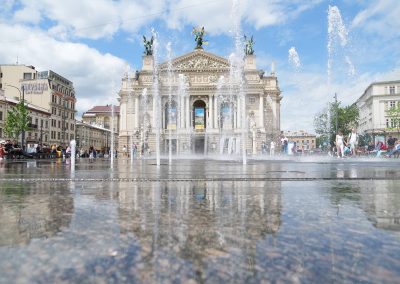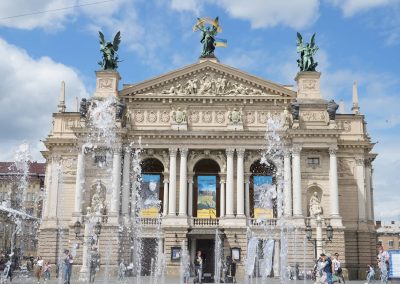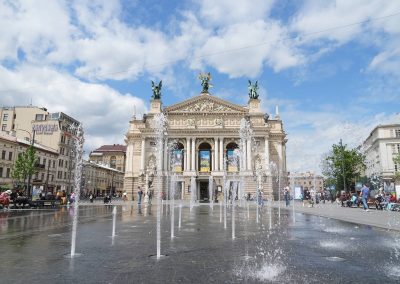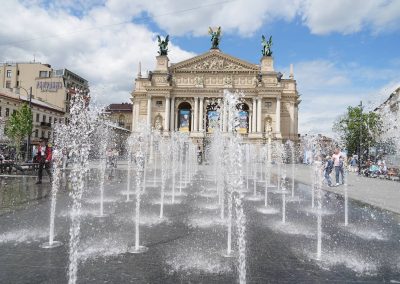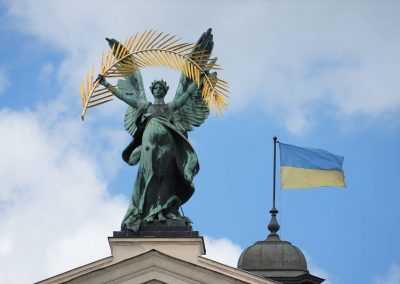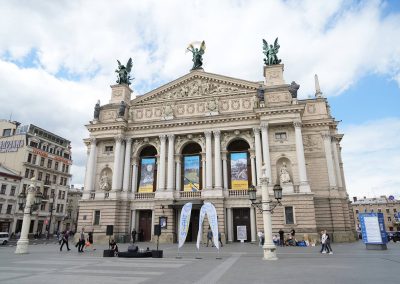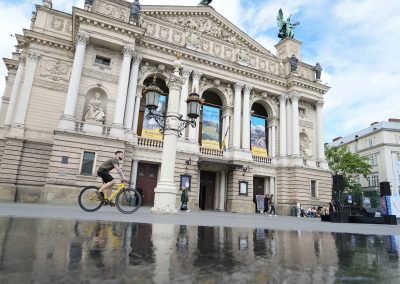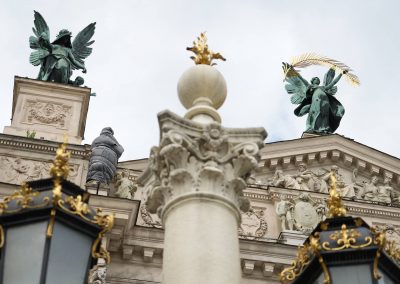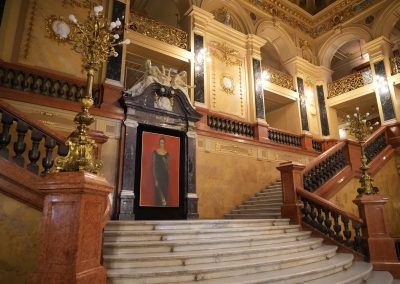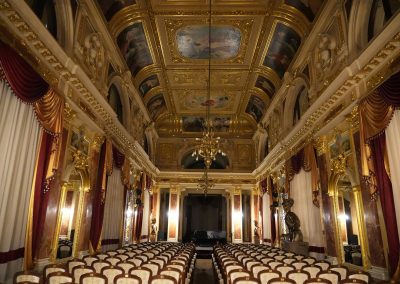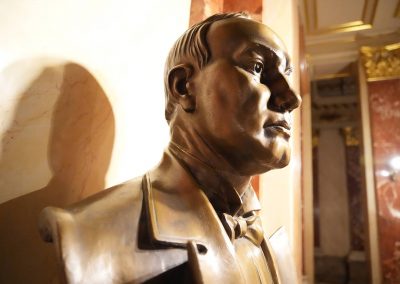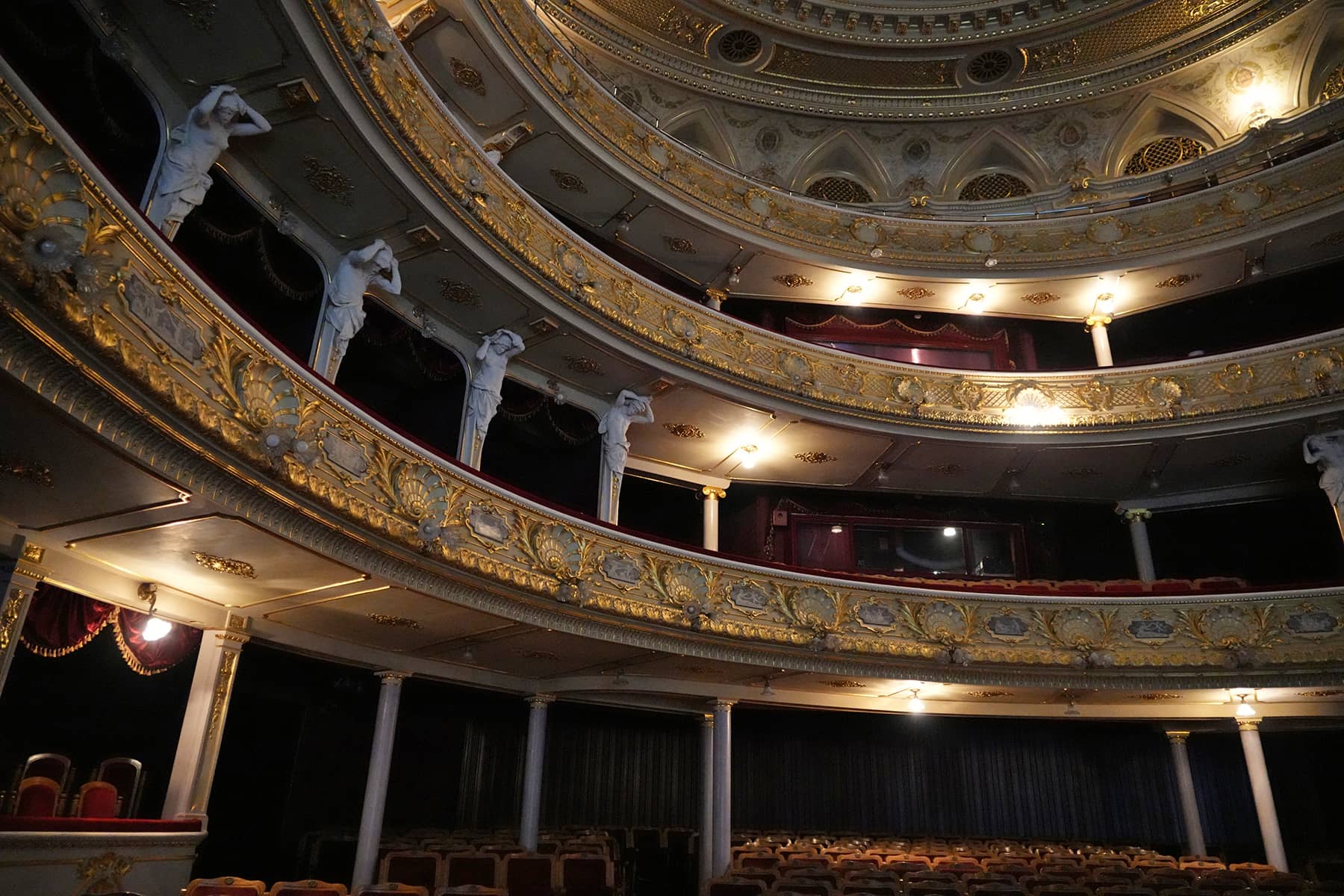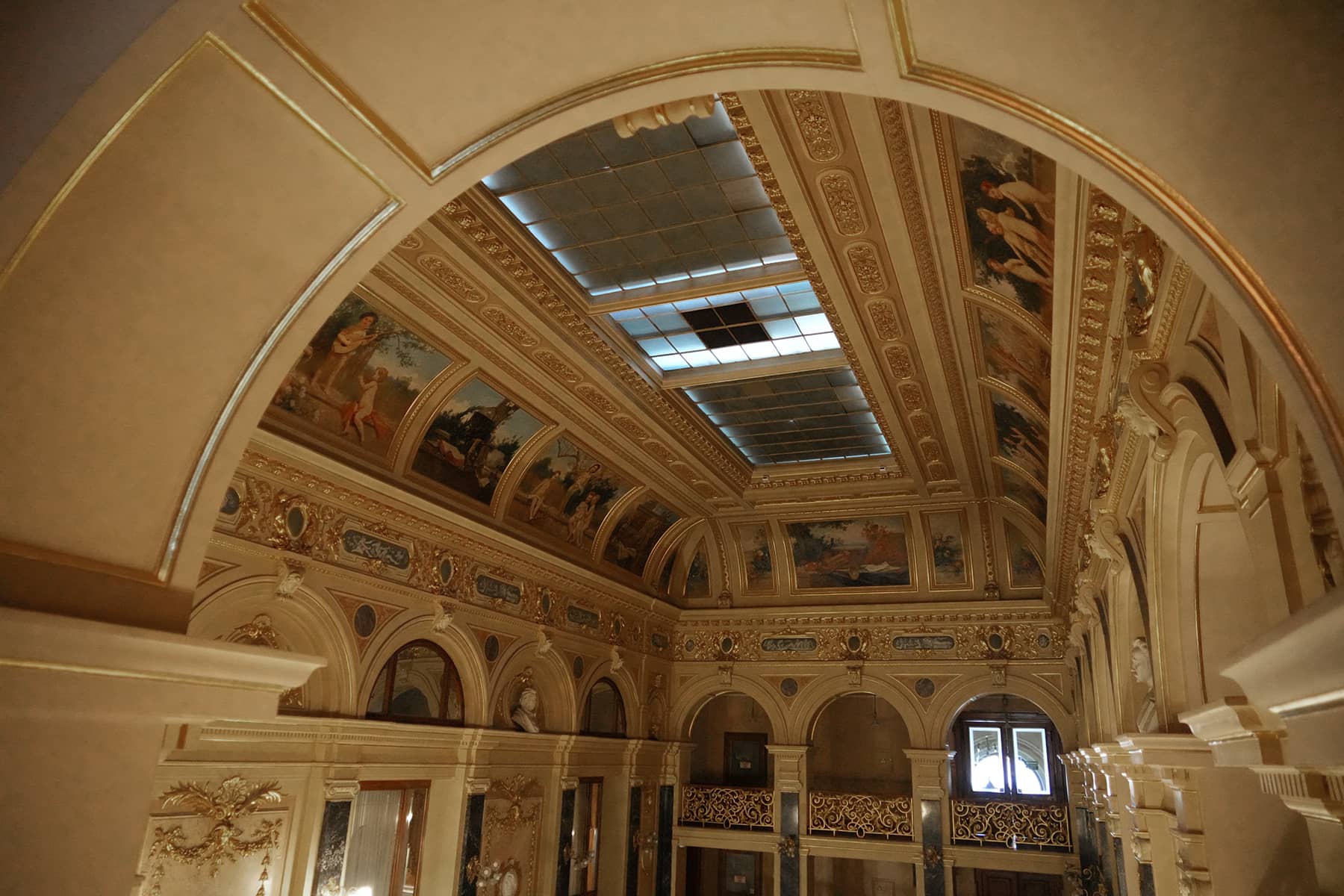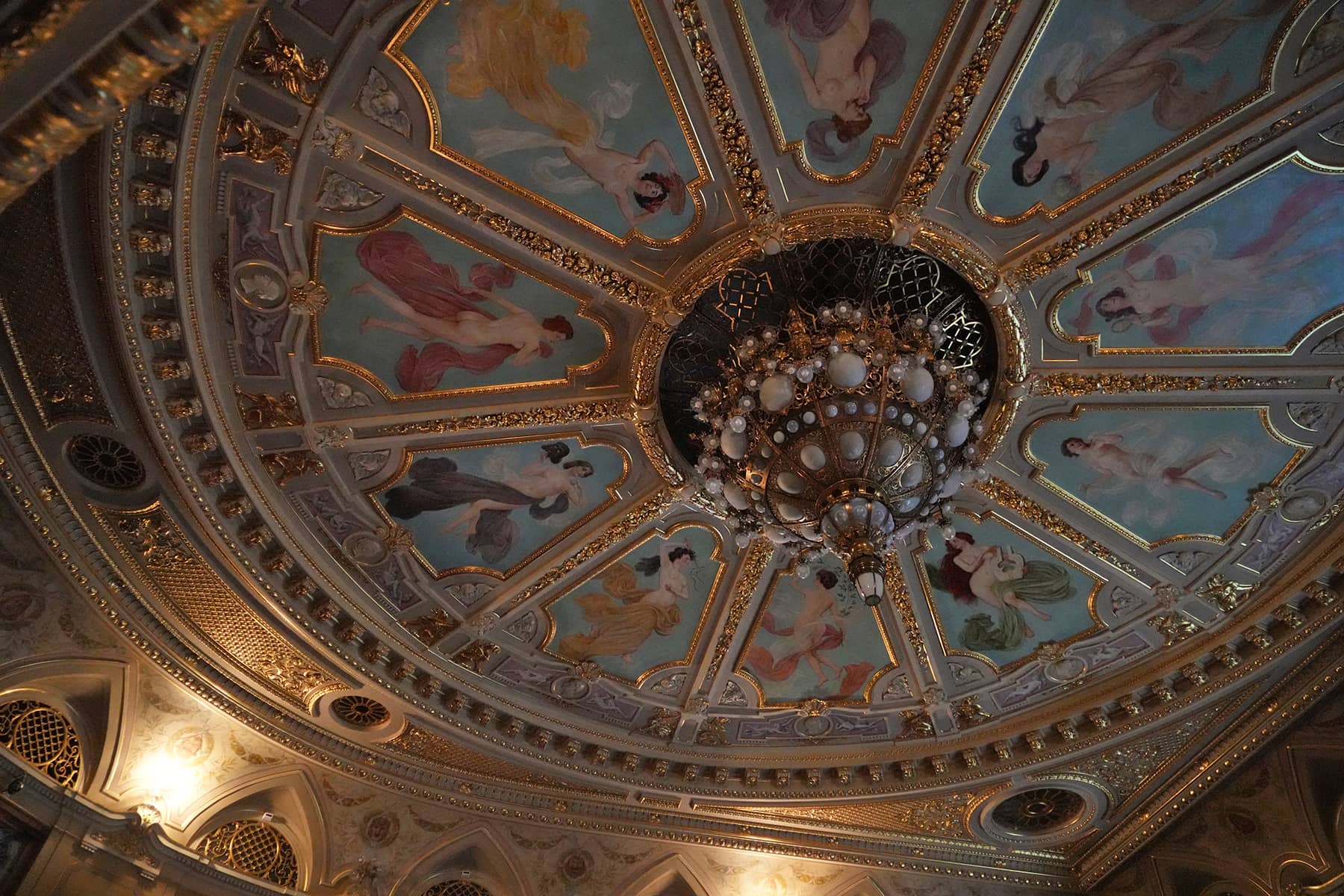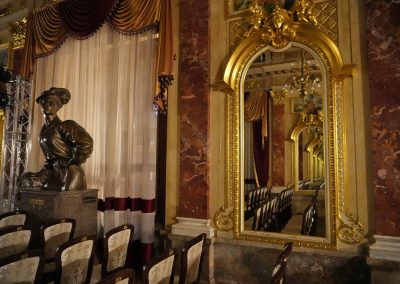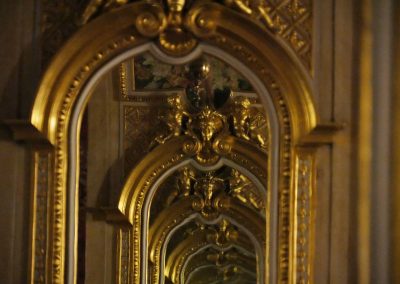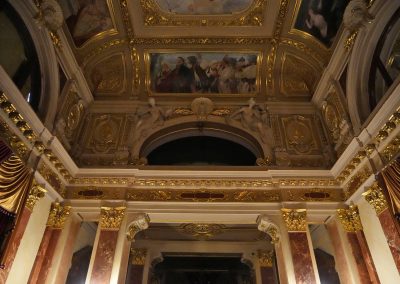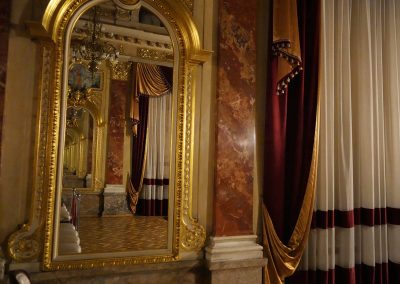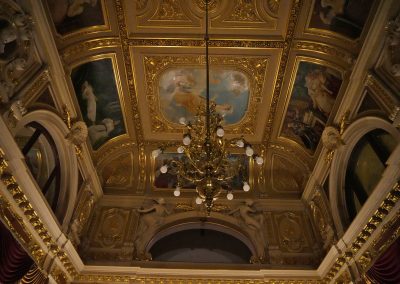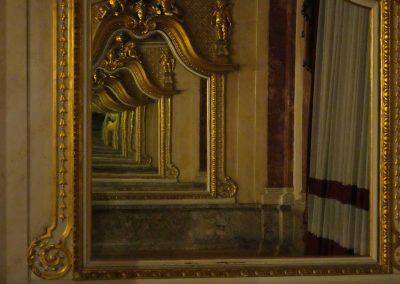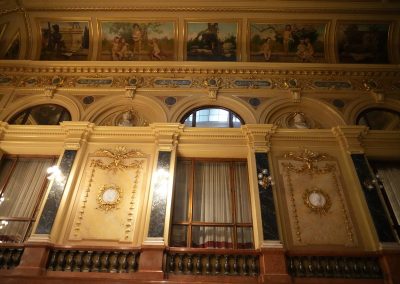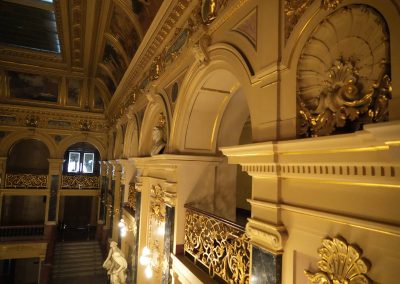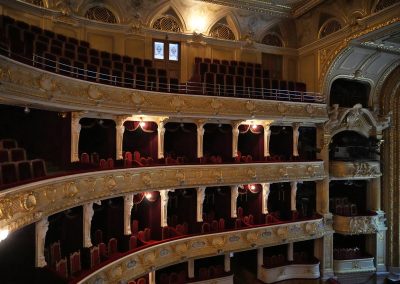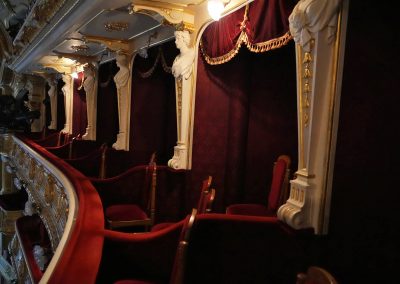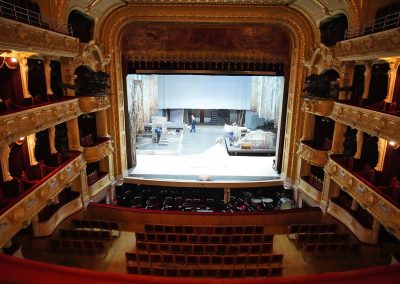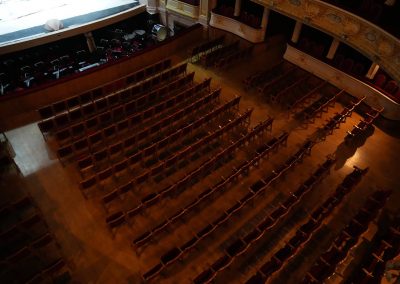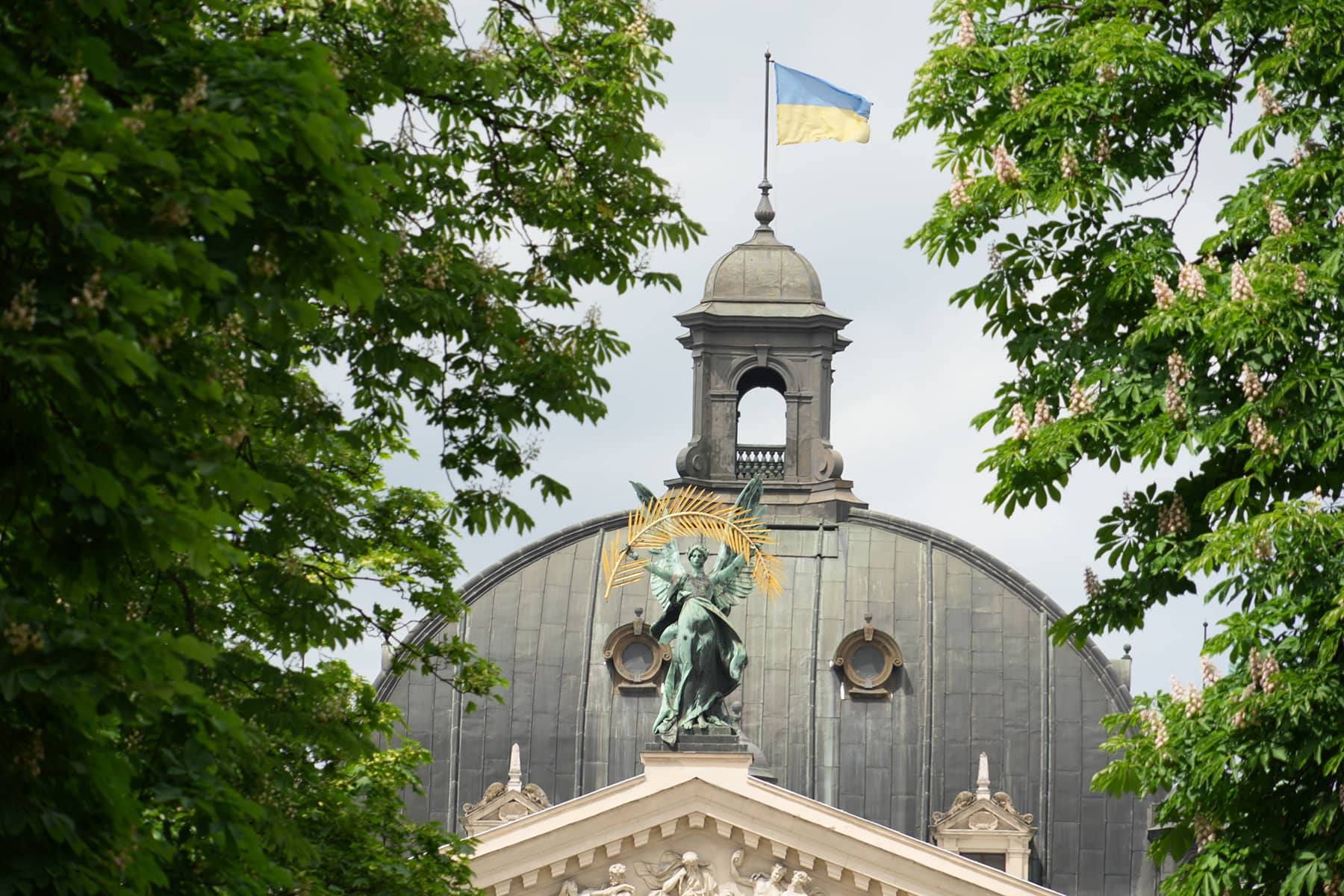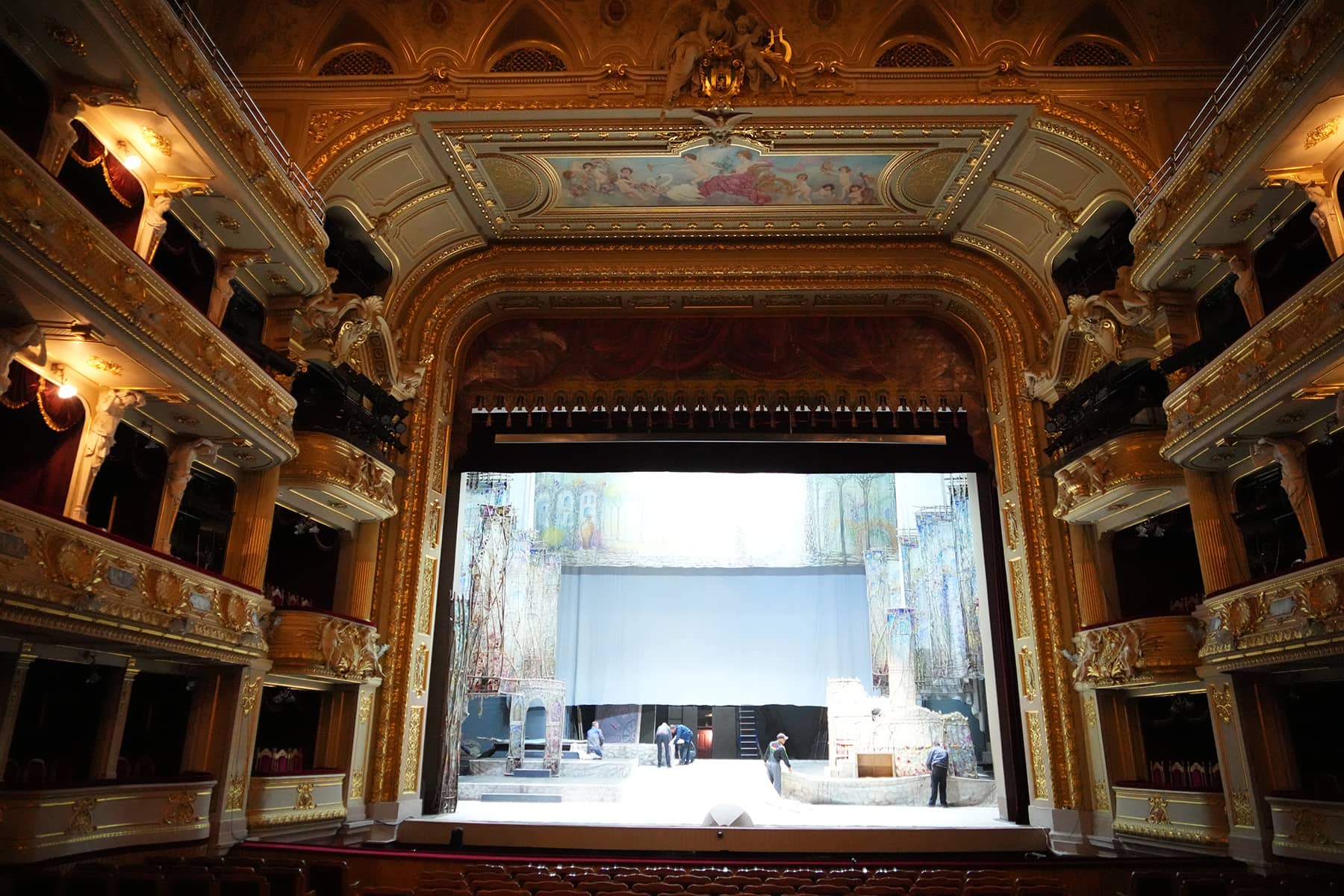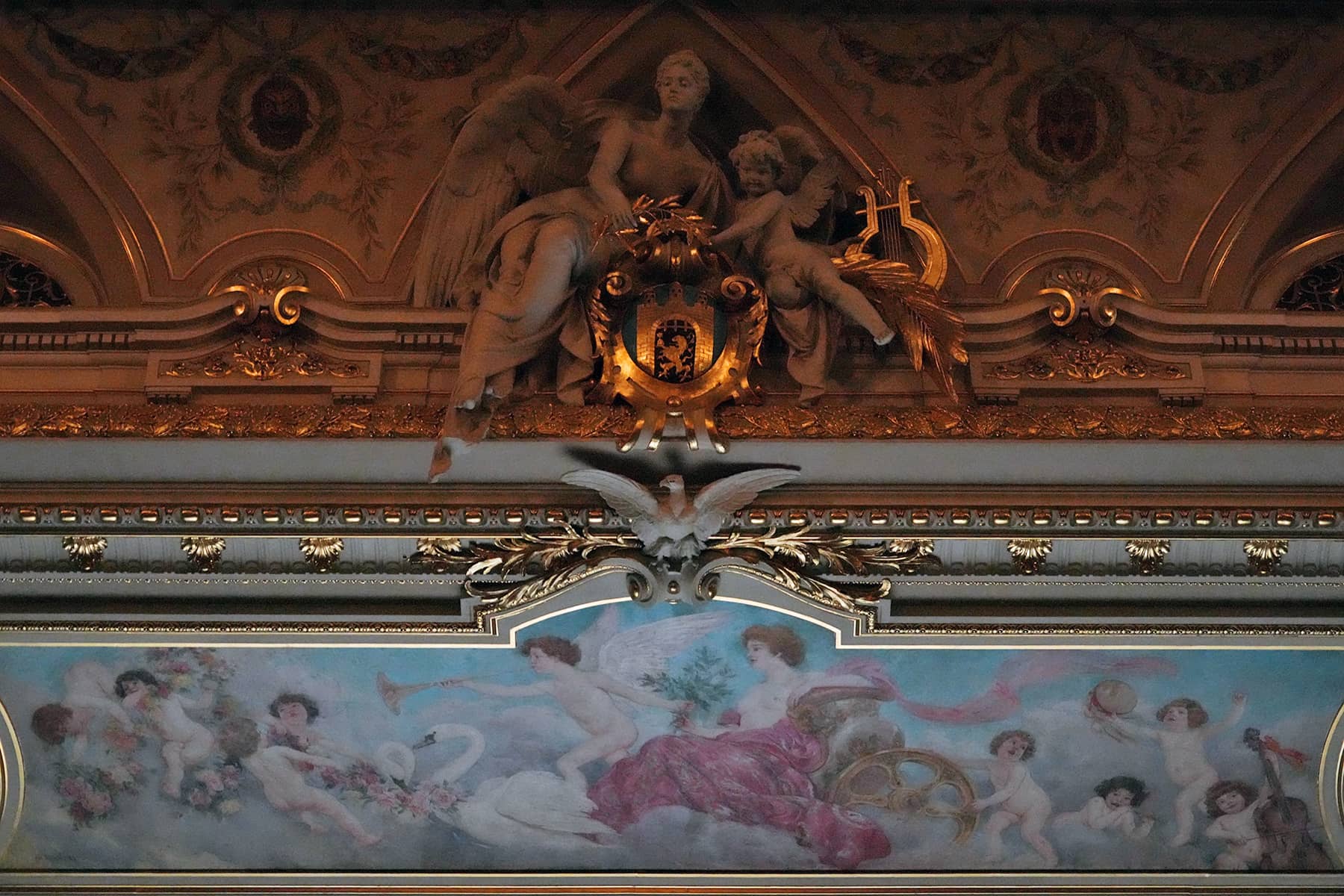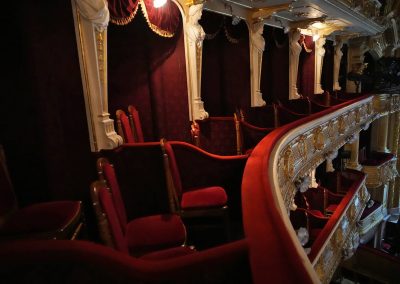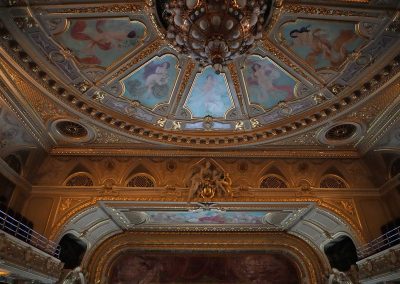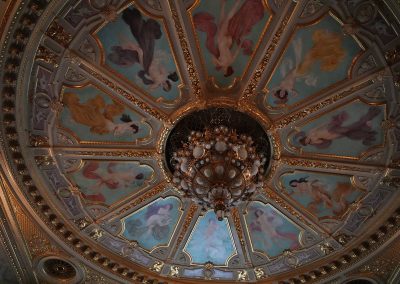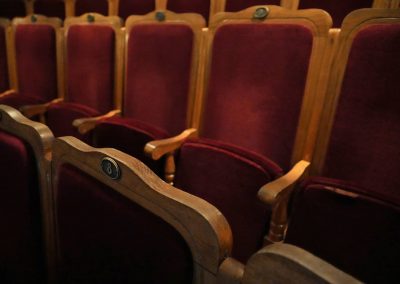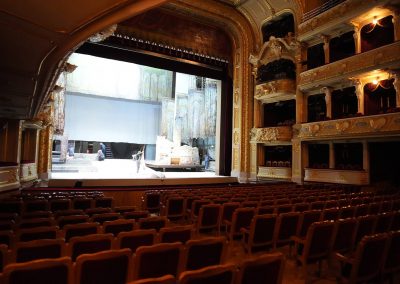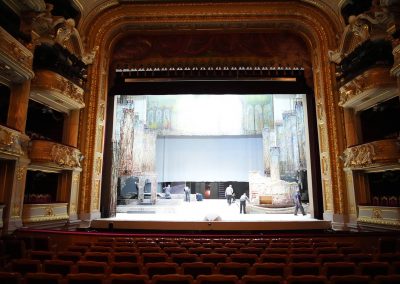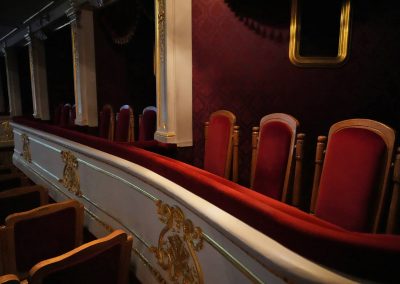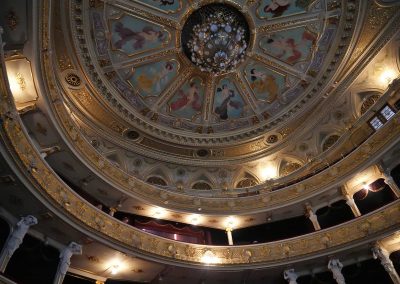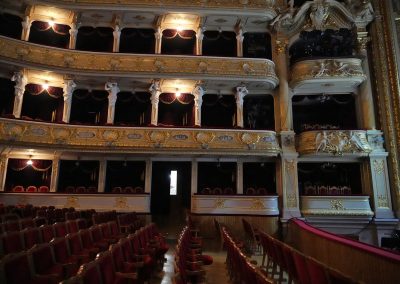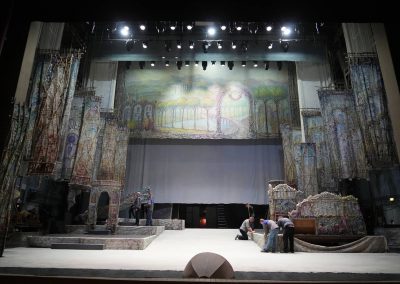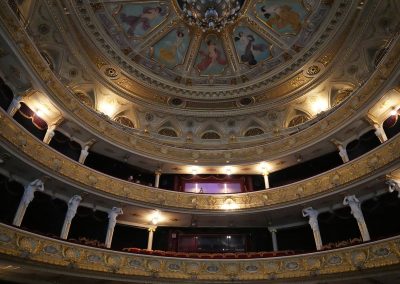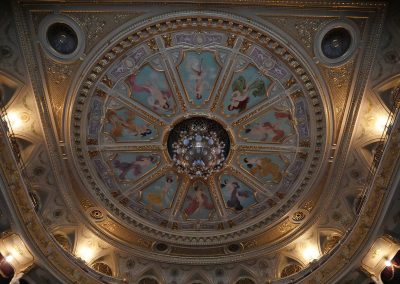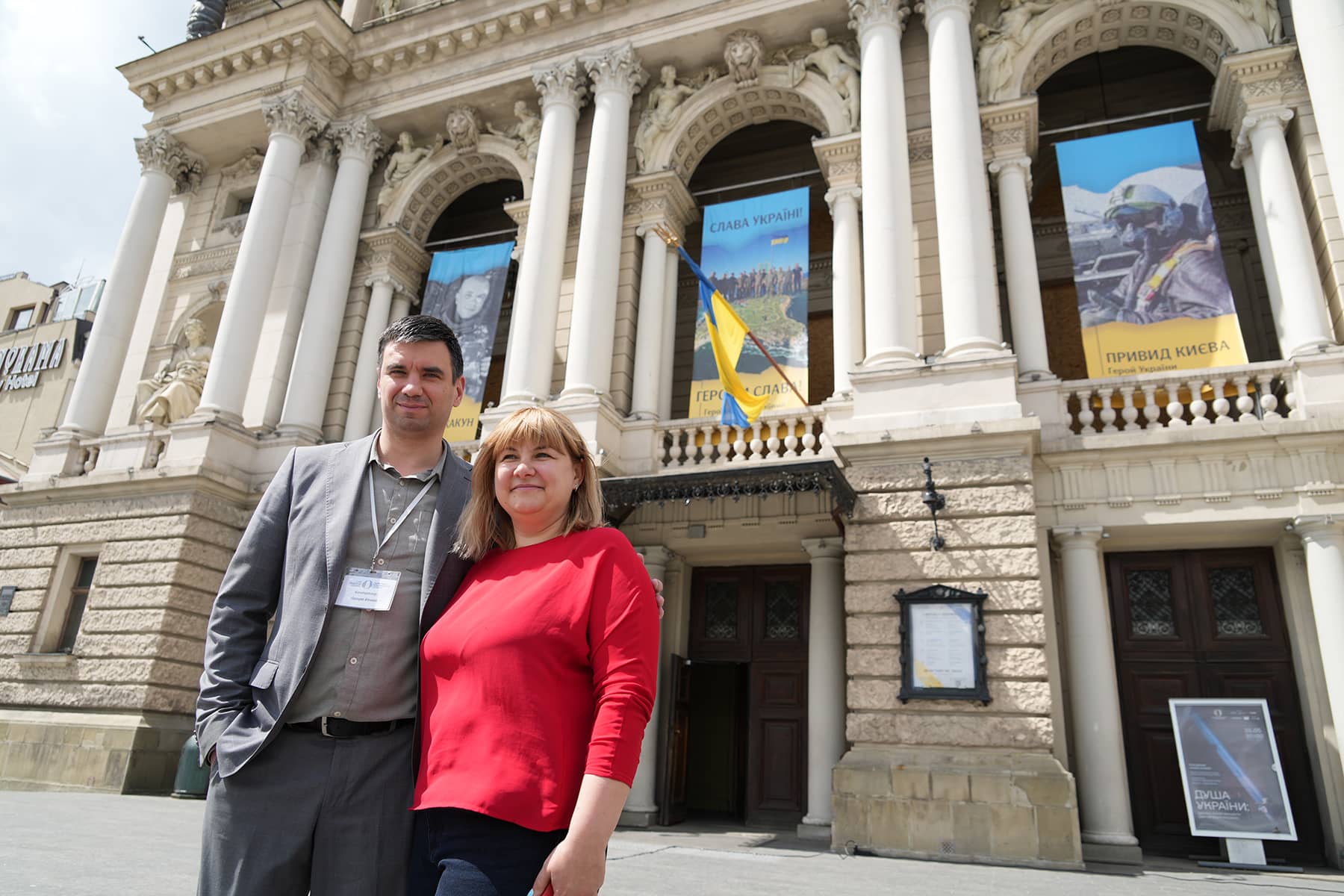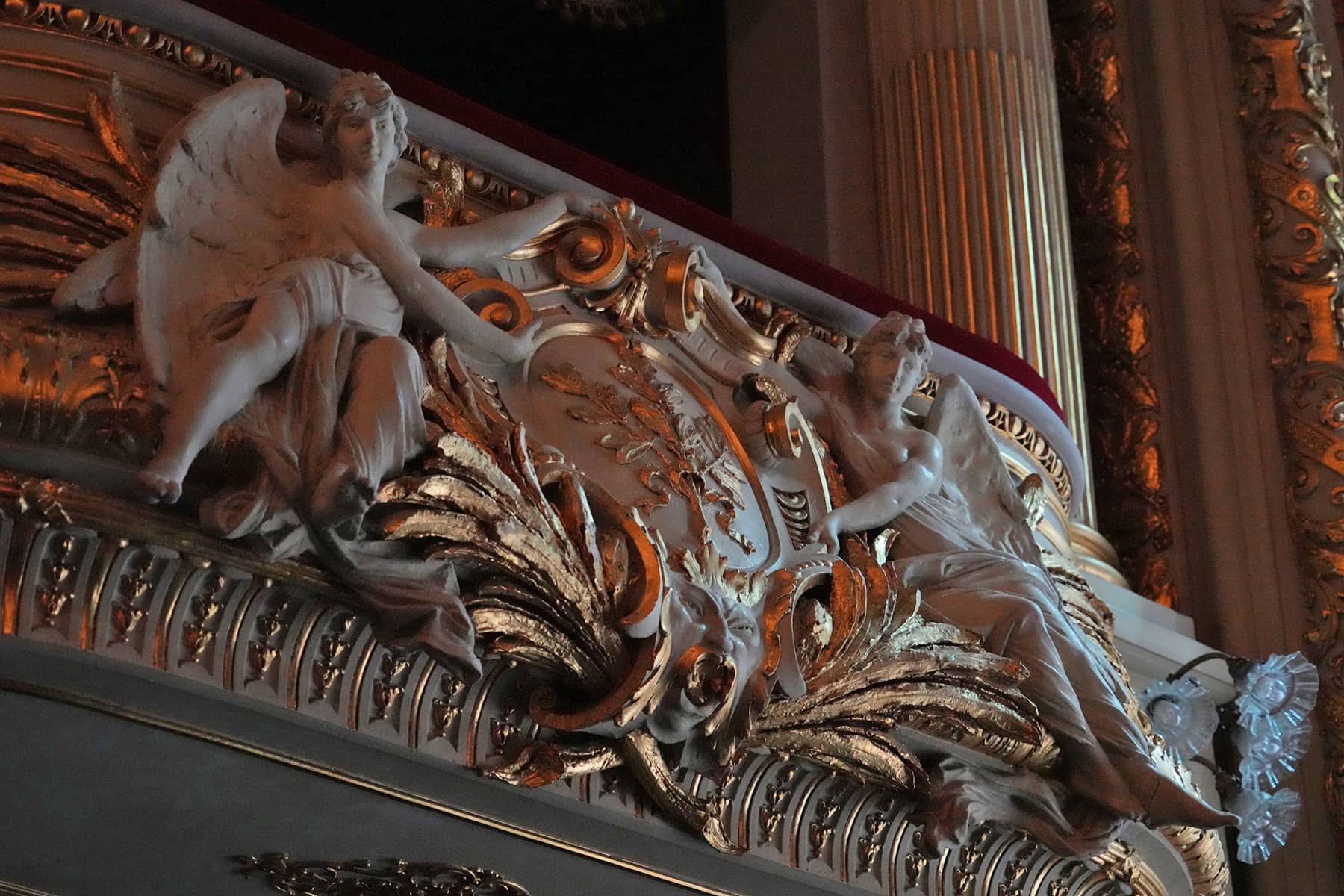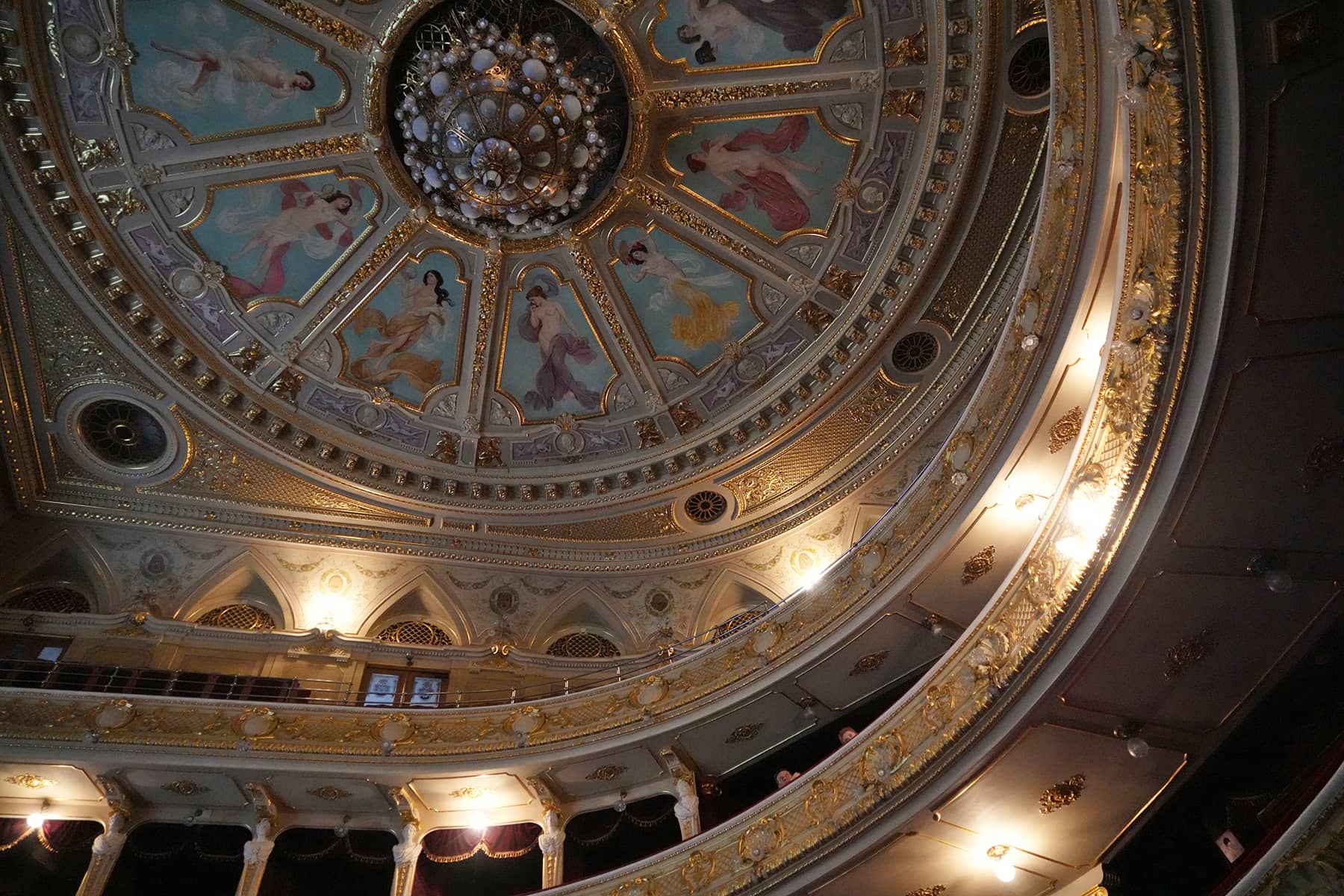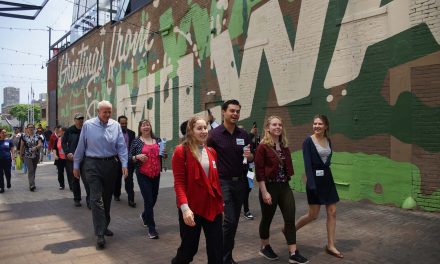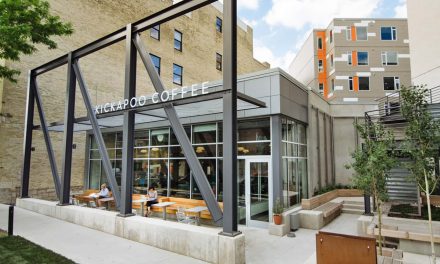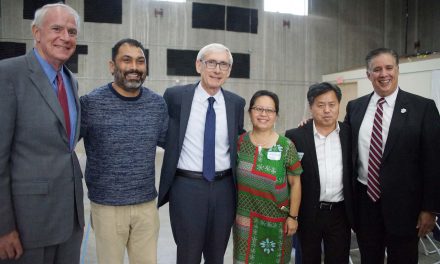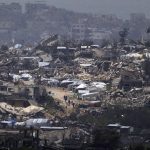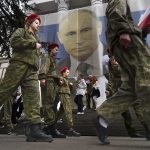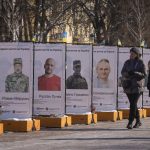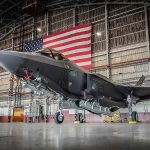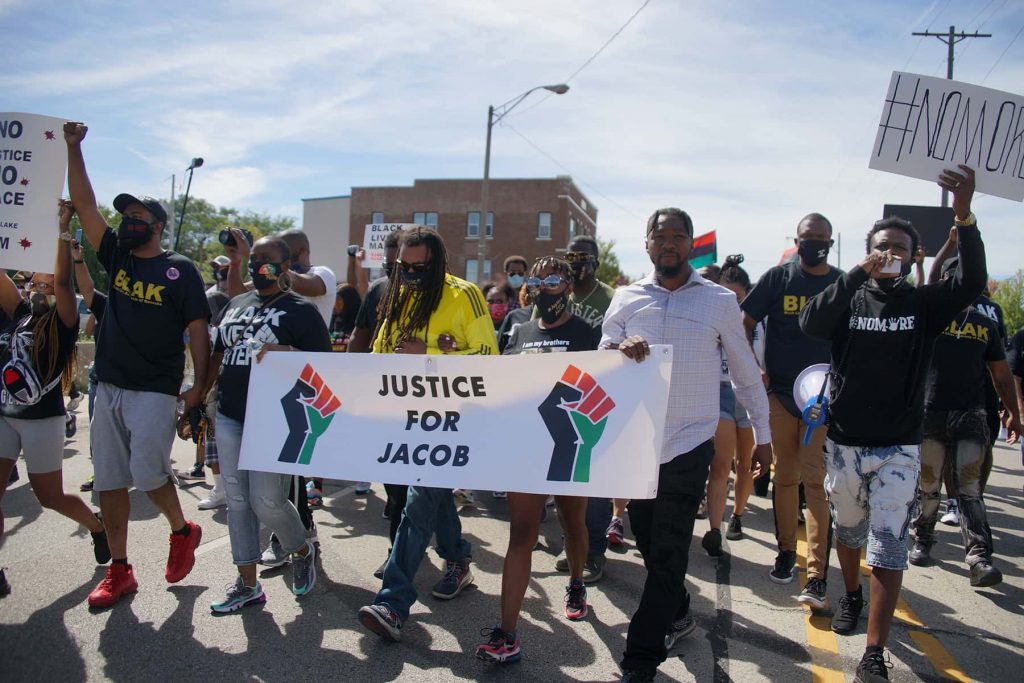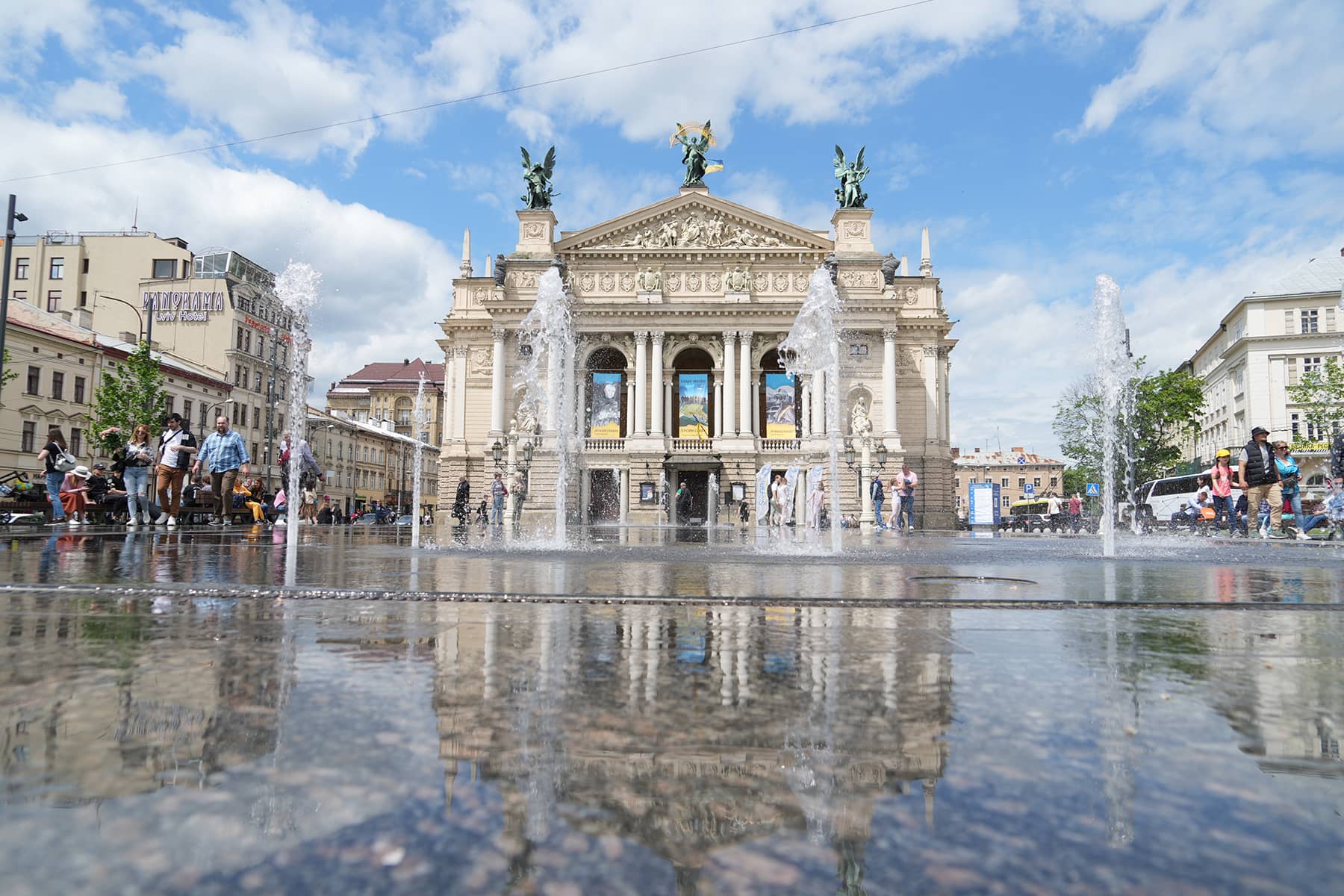
America has many forms of entertainment to share our society with the world. Motion pictures and music, for example, are big cultural exports. But for nations like Ukraine, which has been dominated by foreign powers for centuries, the opera is one of its most important expressions of identity.
To many Americans, the idea of attending the opera is a relic from a vintage era. But for Ukrainians, the opera is an expression of the embodiment of their culture. No place is more important and symbolic than the Lviv Opera.
The Lviv Opera, or as it is formally known – The Solomiya Krushelnytska Lviv State Academic Theatre of Opera and Ballet, is a UNESCO World Heritage Site located in the heart of the city in Western Ukraine. Completed in 1900, it was named after Solomiya Krushelnytska and has been the main symbol of Lviv.
Originally called the Grand Theatre, the best architects, painters, and sculptors worked on its construction. At the end of the 19th century, Lviv was the capital of Galicia Province, which belonged to Austro-Hungarian Empire. Built in a Neo-Renaissance style, which combines the elements of Renaissance, Baroque, and Classicism, the facade of the theatre is decorated with allegorical sculptures of muses, Corinthian columns, niches, and balustrades.
I was familiar with the Lviv Opera because at the start of the Russian invasion, the local Ukrainian American community in Milwaukee held several rallies. A young student often spoke at them, and she talked about studying opera in Lviv.
Born in Lviv, Anya Nakonechna has a strong family heritage with music and roots dating back generations in the western region. First the COVID pandemic then the war delayed returning to her hometown, where Nakonechna had been studying at the Lviv National Musical Academy – named after Mykola Lysenko. It is informally known as the Lviv Conservatory.
“When people think of Europe, what comes to mind are the grand buildings and the sculptures, which are very influential and powerful. So when you have an opera house that is very significant like in Lviv, because of its artwork, people are naturally going to question its beauty, and ask about its significance,” said the Milwaukee native. “The beautiful atmosphere helps connect Ukraine’s folklore with patriotism through classical music. Our folklore is so important because it is always being diminished. And I understand why most people feel that going to the opera to watch a performance is not necessary. But it creates a very magical experience, just being able to admire the humanity of what Ukrainians have created. So the Lviv Opera serves as a platform to use the power of music to share our culture.”
I had the chance to briefly hear Nakonechna sing, and found her voice remarkable. So when the logistics of our trip took the Milwaukee Independent team to Lviv, it was hard to miss such a landmark. We got permission from the Opera’s representatives Petro Benyuk and Natalia Ishchuk to tour the theater and photograph it. The experience was remarkable, as it felt like stepping back in time to a vintage era.
Our only regret was not having time to return for a performance, having missed the morning rehearsals.
Nakonechna had been my inspiration to visit the Opera in Lviv, and my connection back to Milwaukee. So I asked what music meant to her.
“I am a religious person. So anything tied with music is very holy for me. I have been singing all my life in church choirs. And that has been the center of music for me. So much of musical Ukrainian culture is in our church. That is the foundation of everything,” said Nakonechna. “And so every time I sing, it is like I am singing spiritually for God. I definitely think music is an identity of culture. It is very powerful. And when humanity has wars, it means that someone wants to diminish another culture. So music is a tool to preserve that.”
While giving us the tour, Petro explained about the theater’s interior. It was richly decorated with oil paintings, sculptures, and molding. He had a passion for the artwork in particular, and pointed out the central female image above the opera house stage. She was “Glory.”
Higher up on the opera house ceiling was an immense chandelier. The surrounding circle had the paintings of ten women, presenting an artistic rendition of the emotions and ideas that the audience would experience during every opera performance.
Directly above the stage was “Grace,” and continuing clockwise was “Music,” then “Dance,” “Judgement,” “Drama,” “Inspiration”, “Lust,” “Innocence,” “Illusion,” and finally “Truth.”
All the elements of painstaking artistic detail had a purpose and symbolism, and were significant like the opera itself.
Under then-Soviet occupation, the Ukrainian language diminished and used as grounds for discrimination.
“Ukraine and our culture were seen as a low class form of culture. That’s why Ukrainian Opera has so many stories about the countries that wanted to colonize us. All of them have a similar theme,” said Nakonechna. “There’s usually a woman heroine, a Cossack, a father, and a mother. Most often the woman sings about her husband, her love dying, and she is suffering or in a foreign land because someone is either raping her or taking her away from Ukraine.”
Having context about the opera is important, because it is a platform for how Ukrainians share their national identity. Because each region in Ukraine has its own cultural differences, depending on what foreign country had influence, the visual arts offer a way to unite people together with stories of their common heritage.
“At school over the past four years, I was fortunate to take a deep study of Western Ukrainian composers, which were very influential for the city,” said Nakonechna. “They were not just musicians. They were philosophers and lawyers. They studied in Vienna, and they were always seen as the enemy of the Soviet Union. That is why the world has not heard about these composers, because they were either murdered by the Soviet Union or people were too afraid to talk about them.”
One of Nakonechna’s fondest memories of attending the Lviv Opera was from the premiere of a new opera. She said that normally students were given seats in the nosebleed section. but because so many people attended the performance there was no place for them to sit.
“There was a packed house. They told all the students to sit on the stairs on the third floor,” said Nakonechna. “I remember it was really humid, but it was just a great experience. Here we were, following our pursuit in music and sitting on the stairs of a beautiful historical Opera House. It was almost magical, to really listen to the music, and having the experience of being with your friends. It is such a great memory that has always stuck in my head.”
Nakonechna said that her main goal right now was to see her nation keep its independence and win back its territory from Russia. She is still processing what is happening in Ukraine, and how that impacts decisions for her life in Milwaukee.
While Nakonechna had decided that she will not return to Lviv for a while, she continues to share her love of music and her homeland. Over the past few weeks she has performed at benefit concerts to help raise money to send humanitarian aid to Ukraine. It has also been a way for her to educate the Milwaukee public about the depth and vitality of Ukraine’s culture.
“Even though my body is in Milwaukee, my heart is in Lviv with all of my friends and family,” added Nakonechna.
© PHOTO NOTE: All the original editorial images published here have been posted to the Facebook page of Milwaukee Independent. That collection of photos contains the MI copyright and watermark for attribution, and may be used for private social media sharing. Do not download and share images directly from this page. mkeind.com/facebook
Series: Reports from Ukraine
- Reports from Ukraine: Traveling from Milwaukee to a country at war just to take a vacation from America
- Images from Ukraine: Latino artist travels to Irpin to paint mural inspired by "Echoes of Guernica"
- Images from Ukraine: Irpin residents welcome reissue of Russian Warship Stamp as latest sign of victory
- Stories from Ukraine: Wandering in the ruins of a shattered life after surviving Russia's invasion
- Images from Ukraine: Similar to the Alamo, martyred cities bought precious time to save a nation
- Stories from Ukraine: Tent camp offers shelter for displaced residents until Irpin can rebuild lost homes
- Images from Ukraine: Graveyards of Russian war machines show the scale of Putin's failure to seize Kyiv
- Images from Ukraine: Following the invasion convoy's 40-mile route and exploring an abandoned base
- Stories from Ukraine: Illegal weapons and proof of Russian War Crimes easily seen along streets of Irpin
- Images from Ukraine: How Irpin’s cemetery processed the staggering massacre of its local citizens
- Stories from Ukraine: Healing remains slow as Borodyanka residents recover from occupation
- Images from Ukraine: The deep scars of war remain visibly etched across the landscape of Borodyanka
- Interview with Oleksandr Markushin: Mayor of Irpin and the hero of a Hero City
- A Meeting of Sister Cities: Former and current Mayors of Irpin ask Milwaukee's business community for help
- Stories from Ukraine: Having a shared purpose helped Irpin's leaders protect the city and stop the invaders
- Stories from Ukraine: How Milwaukee helped a bakery feed hungry survivors in Bucha with fresh bread
- Stories from Ukraine: Bucha resident recalls how Russians turned neighborhood into a street of death
- Stories from Ukraine: How a mass grave of executions overshadowed accountability from Bucha’s leadership
- Images from Ukraine: Putin’s attack on Babyn Yar is a painful reminder of the broken vow of “Never Again”
- Images from Ukraine: An unexpected encounter with Jewish history and the bloody legacy of persecution
- Images from Ukraine: Listening to timeless voices of ethnic heritage etched in stone at Lychakiv Cemetery
- Images from Ukraine: The experience of attending a military funeral in Kyiv while children died in Uvalde
- Images from Ukraine: Stepping out of the fog of war to see the beauty of faith in ancient places of worship
- Images from Ukraine: The cities of Kyiv and Lviv were divided by history but remain united in identity
- Stories from Ukraine: Anya Nakonechna shares why the Lviv Opera is a symbol of her nation’s culture
- Images from Ukraine: A folk village where visitors can experience the life of past generations
- Images from Ukraine: Signs of renewal sprout from under Irpin’s rubble as city looks to the future
Lее Mаtz
Lee Matz, with Anya Nakonechna and Gianna Rupnick
Milwaukee Independent editorial team for this special series: (UKRAINE) Lee Matz, photojournalist; Oleh Pinta, translator / reporter; Yaroslav Zdyrko, security / videographer; (MILWAUKEE) Halyna Salapata, logistics / translations.
Milwaukee Independent has reported on the situation in Ukraine since it was invaded on February 24. Coverage originally began with reactions and rallies from the local Ukrainian American community, and relationships with Milwaukee’s sister city of Irpin. Through partnerships and good journalism, sources were developed that enabled Milwaukee Independent to publish developments about the unprovoked war in realtime. In late May, a team from Milwaukee Independent spent nearly two weeks on the ground in Ukraine. The award-winning daily news magazine was the first and, at the time, only media organization to send staff into the country since the war began.
Reports from Ukraine: An extensive news series by Milwaukee Independent from a country at war

